Understanding Silicone Mold Curing Times
Understanding silicone mold curing times as silicone molds have found a place in industries ranging from baking to industrial manufacturing, becoming an essential tool for many. Whether you’re an artisan crafting bespoke items or part of a team producing components at scale, understanding silicone mold curing times is really crucial.
Table of contents
- Decoding Silicone Variants: What Types Affect Cure Times?
- The Science Behind Silicone: Why Do Cure Times Vary?
- Understanding Silicone Mold Curing & Mastering Temperatures for Ideal Conditions:
- Speeding Up the Process: Techniques to Accelerate Silicone Curing
- Understanding Barriers: What Slows Down Silicone Curing?
- Conclusion: Understanding Silicone Mold Curing with Confidence
- Contact Us
Curing refers to the process of allowing the silicone to solidify and gain the properties needed for the mold to be usable. It might seem straightforward at first glance, but these cure times can vary widely based on several factors that are worth getting acquainted with.
As an Amazon Associate, I earn from qualifying purchases.
This post contains affiliate links. If you make a purchase through these links, I may earn a commission at no extra cost to you.
This article aims to serve as a guide, offering insights into everything from the different silicones available to what affects their curing times. It’s not just industry experts who will benefit; even at-home hobbyists can make the most out of their projects with this knowledge.
Expect to gain a solid foundation on how various silicones work, what conditions are ideal for curing, and how to troubleshoot common issues that may slow down the process. Armed with this information, you’ll be better equipped to manage your projects efficiently.

Decoding Silicone Variants: What Types Affect Cure Times?
Silicones are versatile materials, but understanding the differences between various types of silicone can significantly impact your molding project’s success. Each type of silicone comes with unique properties influencing how they cure. Recognizing these can help you pick the right one for your needs.
RTV (Room Temperature Vulcanizing) silicone is a popular choice for many mold applications. As the name suggests, it cures at room temperature, making it highly convenient for hobbyists and professionals alike. However, even within RTV silicones, variations exist that can affect how quickly they solidify and set.
HTV (High-Temperature Vulcanizing) silicones offer distinct advantages, particularly in environments where the molds are subject to higher temperatures. These silicones typically require heat to cure, meaning they might not be as swift as RTV unless specific conditions are met.
Other silicone variations might incorporate additional components, like catalysts, that speed up curing and are better suited for certain applications. When selecting silicone, consider what your project demands: flexibility, strength, or heat resistance.
It’s clear understanding silicone mold curing and knowing of these differences enables you to make more informed decisions. There’s a significant advantage in knowing which silicone type will serve best for quick turnaround times, especially if you’re working with tight deadlines. Additionally, knowing when to use a catalyst can ensure you maintain the balance between speed and quality.
This knowledge helps cut down trial and error in your projects, saves resources, and ultimately pushes the quality of your work to meet professional standards. Whether you’re creating detailed components or basic molds, selecting the right silicone type is the first step to success.
The Science Behind Silicone: Why Do Cure Times Vary?
Understanding silicone mold curing isn’t just about waiting for the mold to harden. It involves a fascinating chemical transformation that depends heavily on the silicone’s composition. Different silicones are made up of varied chemicals, and these differences have a direct impact on curing times.
At the heart of the curing process is cross-linking, which is essentially the formation of bonds between the polymer chains in the silicone. This process is greatly influenced by the type and amount of cross-linkers added to the silicone. Think of these as the connectors that tie the whole structure together.
Catalysts are another crucial component in this equation. They accelerate the cross-linking process, reducing the time it takes for the silicone to cure fully. Silicone products designed for rapid curing typically contain higher concentrations of catalysts. However, careful handling is essential, as excessive catalysts can sometimes compromise the mold’s final flexibility and durability.
The balance of these chemicals defines how quickly or slowly a silicone cures. Understanding this can be a game changer. If you’re working on a project that needs quick turnover, knowing which chemical additives speed up the process can save valuable time.
Moreover, it’s not just the additives that matter. The basic polymer structure affects the mold’s performance under stress, temperature, and aging. For industrial applications, especially where longevity and resilience are critical, understanding these elements ensures both reliability and efficiency in production.
By grasping these science-backed insights, you can tailor your approach to suit specific project needs, optimizing both performance and timeline. This scientific awareness allows both DIY enthusiasts and professionals to choose the right silicone and process for their unique applications.
Understanding Silicone Mold Curing & Mastering Temperatures for Ideal Conditions:
Temperature plays a pivotal role in silicone curing. Working within the right temperature range can make all the difference between a successful project and one that falls short. Every silicone type has its own sweet spot when it comes to ambient temperatures for curing.
For most RTV silicones, room temperature is perfect. But what happens when your workspace runs cold or gets too warm? Extreme temperatures can alter the curing time, affecting the final properties of the mold. A cold environment can slow the process down, while too much heat might speed it up uncontrollably, potentially leading to defects.
HTV silicones demand more attention to temperature, as they require elevated heat to cure properly. Using controlled heat sources like ovens or specialized curing chambers can help ensure even and complete curing. It’s important to monitor these conditions closely to avoid hot spots that might result in uneven consistency.
Key advice is to maintain a stable environment. Avoid sudden temperature changes during the curing process. If you’re experimenting at home, simple measures like portable heaters or fans can create a consistent atmosphere ideal for curing.
For large production settings, investing in climate-controlled spaces ensures that each batch stays uniform. This stability not only enhances quality but also reduces waste, which is both cost-effective and environmentally friendly.
Remember, understanding the relationship between silicone and temperature opens doors for innovation. When you know how to manipulate these factors, you gain greater control over your work, ensuring that the molds you’re creating meet specifications and hold up under use.
Speeding Up the Process: Techniques to Accelerate Silicone Curing
When time is of the essence, and you need those silicones to cure fast, there’s a bag of tricks to draw from without sacrificing quality. Here’s a rundown of what you can do to speed things up.
Adding specific catalysts can significantly reduce curing time. Think of these as turbo boosters—they amplify the rate of cross-linking in the silicone. Be cautious, though, as too much can affect the final properties of your mold. It’s a balancing act to ensure you keep the integrity of the finished product intact.
Applying heat is another straightforward technique. Using a gentle heat source like a hairdryer or a small heater can nudge the process along. However, avoid overdoing it to prevent warping or other damage. For professional settings, curing ovens calibrated to the needed temperature can ensure even and accelerated curing without inconsistencies.
Some silicones respond well to UV light, which can drastically cut down curing times. This technique is especially useful for certain specialized silicones designed to react quickly to UV exposure. However, this method often requires specific equipment, so it’s more suited to industrial use rather than home projects.
Experimenting with moisture can also work wonders. Some silicones activate faster in a humid environment. Using a simple mist spray lightly during the curing process might do the trick. Again, caution is key, as too much moisture can lead to unwanted bubbles or weaker molds.
These strategies let you tailor curing times to fit your schedules and demands without losing sight of the quality. By carefully applying these techniques, both hobbyists and professionals can benefit from reduced waiting times and increased productivity.
Understanding Barriers: What Slows Down Silicone Curing?
Silicone curing can sometimes take longer than expected, and several factors might be at play here. Recognizing these barriers lets you troubleshoot and optimize curing processes effectively.
Humidity is a usual suspect. While some silicones cure faster with a bit of moisture, excessive humidity can have the opposite effect, slowing down the cure time and possibly leading to a tacky surface. It’s crucial to maintain proper ventilation to keep moisture levels in check.
Air exposure can also play a part. If working with a silicone type that forms a skin during curing, excessive air circulation might disrupt this process and prolong the cure time. Using a controlled enclosure for the cure can lead to more consistent and reliable results.
Contamination is another hidden culprit. Dust, grease, or residues from previous projects can interfere with the curing process. It’s vital to ensure that all surfaces and tools are clean before starting.
Inconsistent mixing can lead to uneven properties within the silicone, causing areas to cure at different rates. Taking time to mix components thoroughly before application can prevent this problem.
Each of these factors, if not managed properly, can hinder your workflow and affect the quality of your molds. Continuously monitoring these conditions helps maintain efficient and successful curing every time.
Conclusion: Understanding Silicone Mold Curing with Confidence
Understanding the complexities of silicone mold curing transforms a potentially tricky process into a manageable one. By now, you’ve got a good sense of what affects silicone curing times and how to harness that knowledge in your projects.
Selecting the right type of silicone, based on your specific needs is just the start. Matching that choice to the correct environmental conditions and utilizing additives or techniques to control curing time gives you a powerful toolkit to work with.
Don’t forget the practical tips for accelerating or troubleshooting curing issues. Whether it’s balancing the catalyst use, manipulating temperature, or controlling humidity, these factors all play a role in achieving the ideal cure.
With these insights, you can tackle any molding project with a bit more confidence, adapting as needed based on the requirements of each task. From hobbyists to industrial experts, understanding these principles ensures higher quality results and more efficient workflows.
It’s an ongoing learning process, but with each project, you’ll gain more intuition and skill in managing silicone curing times. This foundation not only supports your current projects but also paves the way for future innovation and exploration in silicone molding.
Contact Us
We hope you find the information useful, but if you have any questions or need help, send us a message. You do have to sign in and confirm these days to comply with government rules. Sorry for the inconvenience.
Author Rob


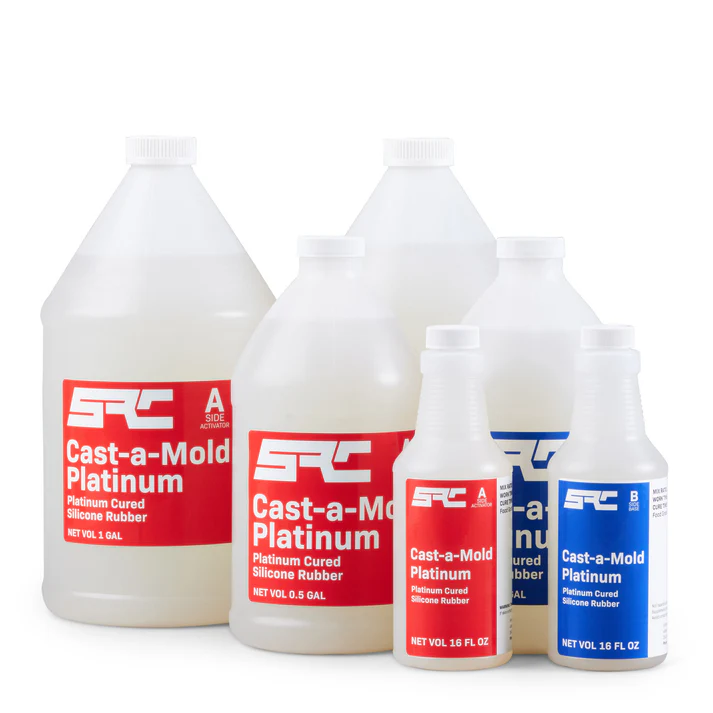
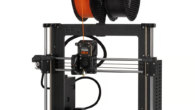

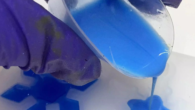

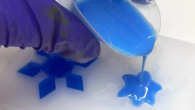
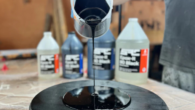
Hi Rob,
I read your article “Understanding Silicone Mold Curing Times” and I must say, I’m thoroughly impressed! The depth and clarity with which you’ve explored this topic are commendable.
You’ve managed to break down a complex subject into easily digestible sections, making it accessible to both hobbyists and professionals alike. The way you’ve explained the science behind the curing process, the impact of different silicone types, and the role of environmental factors is truly enlightening.
I particularly appreciated the practical tips you provided for accelerating curing times and troubleshooting common issues. These insights are invaluable for anyone looking to optimize their moulding projects.
Your article not only provides a solid foundation for understanding silicone mould curing but also encourages further exploration and innovation in this field. It’s evident that you have a deep passion for this subject, and it shines through in your writing.
I have one question that I believe could spark an interesting discussion: In your experience, what has been the most challenging silicone moulding project you’ve undertaken, and how did your understanding of curing times help you overcome those challenges?
Thank you for sharing your knowledge with us, Rob. I look forward to more insightful articles from you in the future!
All the Best,
Eric
Hi Eric,
Sorry for the delay in responding, health issues are in play. I really appreciate your comments. Regarding your one question, I can say with ease that when we were getting ready to pour a very large and complex silicone mold in South Florida in one January.
I just caught and averted a costly disaster when one of my Central American workers who was not familiar with cold weather precautions of any type, was about to mix the silicone. He must have had 4 layers of clothes on, but it never occurred to him that changes to his mold-making process were required.
The workshop doors were closed, and instead of the normal high-volume misting fans, we used two powerful space heaters which were rapidly acquired from the local rental company.
These were used and monitored for 24 hours allowing a full cure. 2 days later we were back up to 75 degrees.
Rob
Hello Rob!
This article raises some fascinating points about silicone mold curing times! I’m curious about how various factors, like room temperature and humidity, play a role in speeding up or slowing down the process. Are there specific conditions that are considered ideal for ensuring a perfect cure every time?
The mention of different curing methods, like heat curing, has me wondering: are there certain types of molds or applications where heat curing is absolutely necessary, or is it more of a time-saving technique? And what happens if you accidentally de-mold too early—can the piece still be salvaged, or does that compromise its integrity completely?
I also noticed the reference to catalyst variations impacting curing time. How do you determine the best ratio to use? Are there common mistakes beginners make when mixing silicone that could affect the final result?
For someone working in a space without precise climate control, are there tools or techniques to stabilize the curing environment? I’d love to know more about how professionals or DIY enthusiasts handle these challenges to ensure consistent results.
Angela M 🙂
Hi Angela,
And sorry for the slow reply. The average best temperature for most liquid rubbers is + – 70 F, the only real need for additional heat cure is your schedule.
Demolding early is very similar to demolding a jello before it’s been left to set in the fridge, a definite no and something to be totally avoided.
Catalyst’s are really controlled by the individual manufacturer and it’s advisable to read each label carefully..
the most common mistakes are mixing and pouring too fast, and creating the dreaded bubbles, which is nearly as bad as taking the jello out of the fridge too early.
Rob